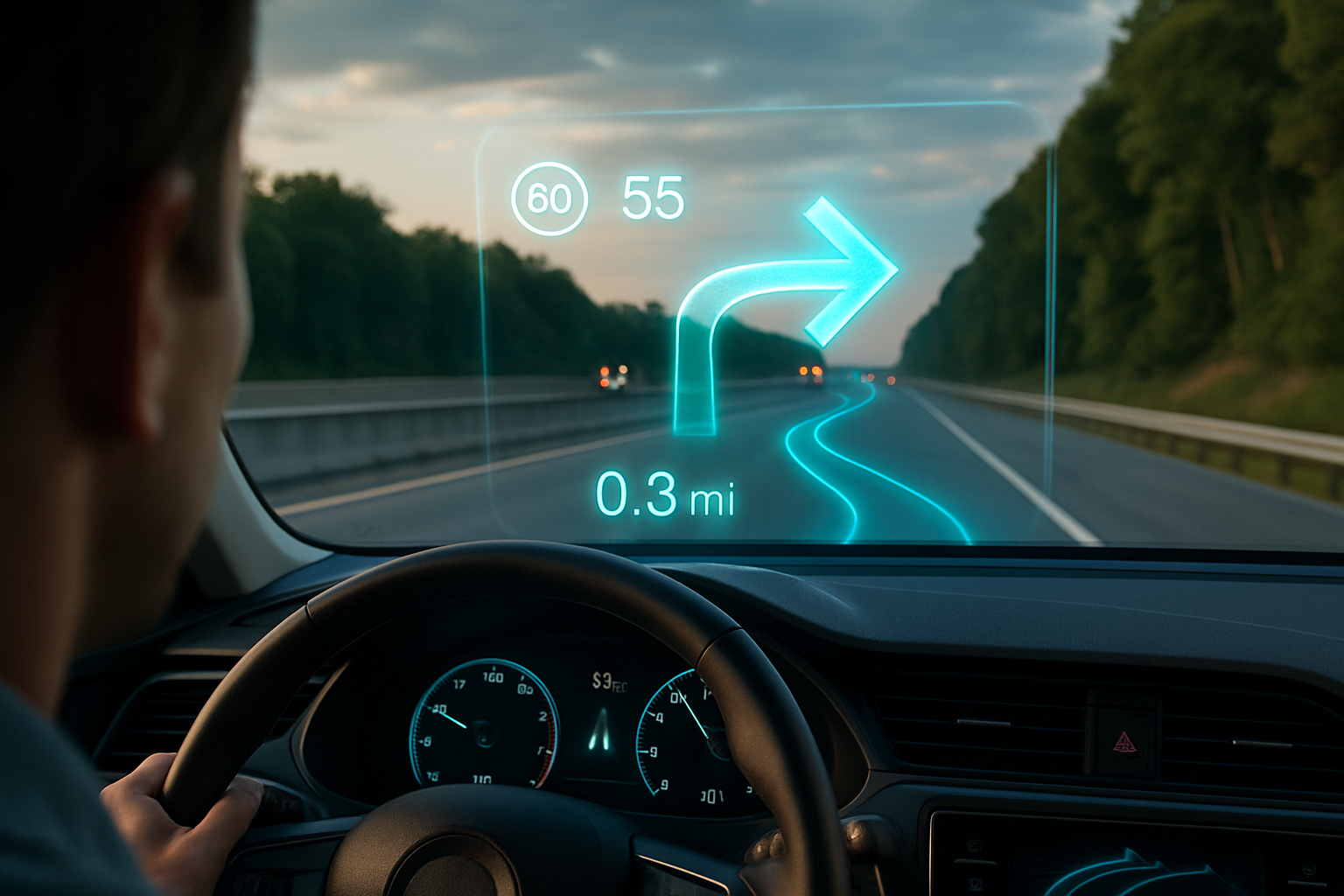Holographic Windshields: The Future of Automotive Navigation
Imagine cruising down the highway, your eyes fixed on the road ahead. Suddenly, a vibrant, three-dimensional arrow appears to float just above your hood, guiding you effortlessly to your destination. This isn't science fiction – it's the revolutionary world of holographic windshields, poised to transform the way we interact with our vehicles and navigate our roads. As automotive technology continues to evolve at breakneck speed, this cutting-edge innovation promises to enhance safety, streamline information delivery, and redefine the driving experience for millions of motorists worldwide.

The leap from traditional HUDs to holographic windshields represents a quantum shift in both technology and user experience. Unlike their predecessors, holographic systems utilize advanced optics and processing power to create true three-dimensional images that appear to float in space before the driver. This breakthrough has its roots in military aviation, where similar technology has been used in fighter jet cockpits to provide pilots with crucial information without requiring them to look away from their field of view.
How Holographic Windshields Work
At the heart of holographic windshield technology lies a complex interplay of optics, computer graphics, and real-time data processing. The system typically consists of three main components: a projector unit, a specially coated windshield, and a powerful onboard computer.
The projector unit, usually mounted in the dashboard, emits carefully calibrated light patterns onto the windshield. The windshield itself is coated with a transparent, hologram-friendly film that acts as a reflective surface for the projected images. This film is engineered to be invisible to the naked eye under normal conditions but becomes active when struck by the projector’s light.
The onboard computer serves as the brains of the operation, processing vast amounts of data from the vehicle’s sensors, navigation system, and external sources. It then generates the appropriate holographic images and adjusts them in real-time based on the car’s speed, direction, and the driver’s head position.
Beyond Navigation: The Multifaceted Applications
While turn-by-turn navigation is perhaps the most obvious use case for holographic windshields, the technology’s potential extends far beyond simple directional cues. Automotive engineers and designers are exploring a wide range of applications that could revolutionize the driving experience:
-
Enhanced Safety Alerts: Holographic windshields can project warning signs directly into the driver’s line of sight, alerting them to potential hazards like pedestrians, animals, or obstacles in the road.
-
Augmented Reality Parking Assistance: Three-dimensional guidelines can be overlaid onto the real world, making parallel parking and navigating tight spaces a breeze.
-
Vehicle Status Display: Important information about the car’s performance, fuel efficiency, and maintenance needs can be displayed unobtrusively in the driver’s peripheral vision.
-
Traffic Flow Optimization: By integrating with smart city infrastructure, holographic windshields could display real-time traffic patterns and suggest optimal routes to reduce congestion.
-
Environmental Information: Weather conditions, air quality data, and even local points of interest could be seamlessly integrated into the driver’s view.
The Road Ahead: Challenges and Opportunities
As with any emerging technology, the widespread adoption of holographic windshields faces several hurdles. One of the primary challenges is cost – the advanced optics and processing power required for these systems currently make them prohibitively expensive for mass-market vehicles. However, as with many automotive technologies, economies of scale and continued research are expected to drive down costs over time.
Another significant consideration is the regulatory landscape. Transportation authorities worldwide will need to develop new guidelines and standards to ensure that holographic displays enhance rather than distract from safe driving practices. This will likely involve extensive testing and collaboration between automakers, technology companies, and government agencies.
The Human Factor: Adapting to a New Reality
Perhaps the most intriguing aspect of holographic windshield technology is how it will change the way drivers interact with their vehicles and the road. For generations, drivers have relied on physical gauges, mirrors, and external signage to navigate and operate their cars. The shift to a more immersive, digitally augmented driving experience represents a fundamental change in this relationship.
Early studies suggest that holographic displays can significantly reduce the time drivers spend looking away from the road, potentially improving safety. However, there are also concerns about information overload and the risk of drivers becoming overly reliant on digital assistance. Striking the right balance between helpful augmentation and sensory overload will be crucial as this technology evolves.
A Glimpse into the Crystal Ball
As holographic windshield technology continues to mature, we can expect to see increasingly sophisticated and integrated systems. Future iterations may incorporate eye-tracking technology to further personalize the display, or even allow for gesture-based controls, enabling drivers to interact with their vehicle’s systems without taking their hands off the wheel.
The potential for integration with other emerging automotive technologies is also exciting. Imagine a world where holographic displays work in tandem with advanced driver assistance systems, creating a seamless blend of human control and machine intelligence. Or consider the possibilities when combined with vehicle-to-vehicle communication, allowing cars to share information and create a truly interconnected driving ecosystem.
In conclusion, holographic windshields represent a transformative leap in automotive technology, promising to enhance safety, convenience, and the overall driving experience. As we stand on the cusp of this new era, one thing is clear: the road ahead is not just a path to our destination, but a gateway to an entirely new way of experiencing the journey.





